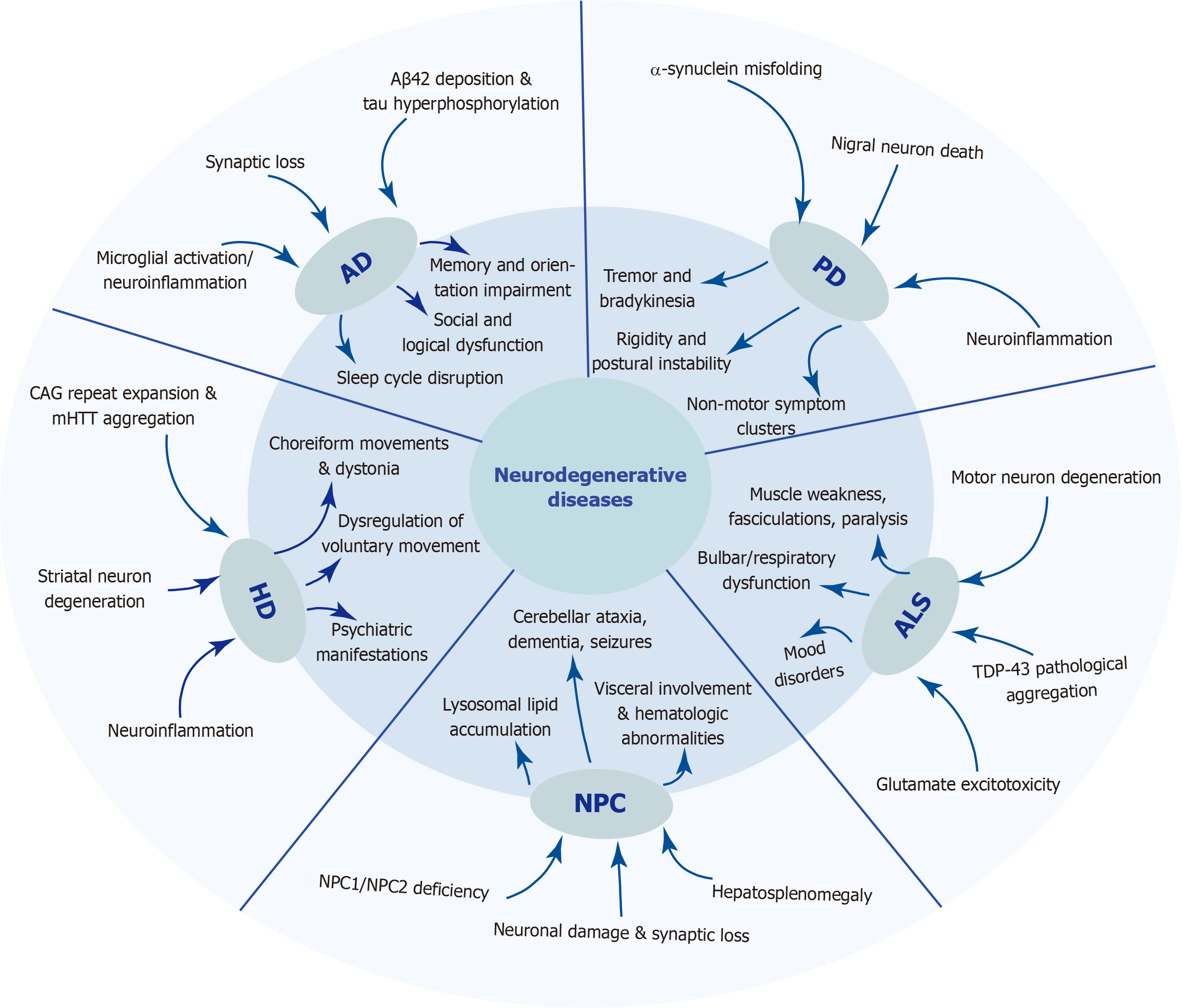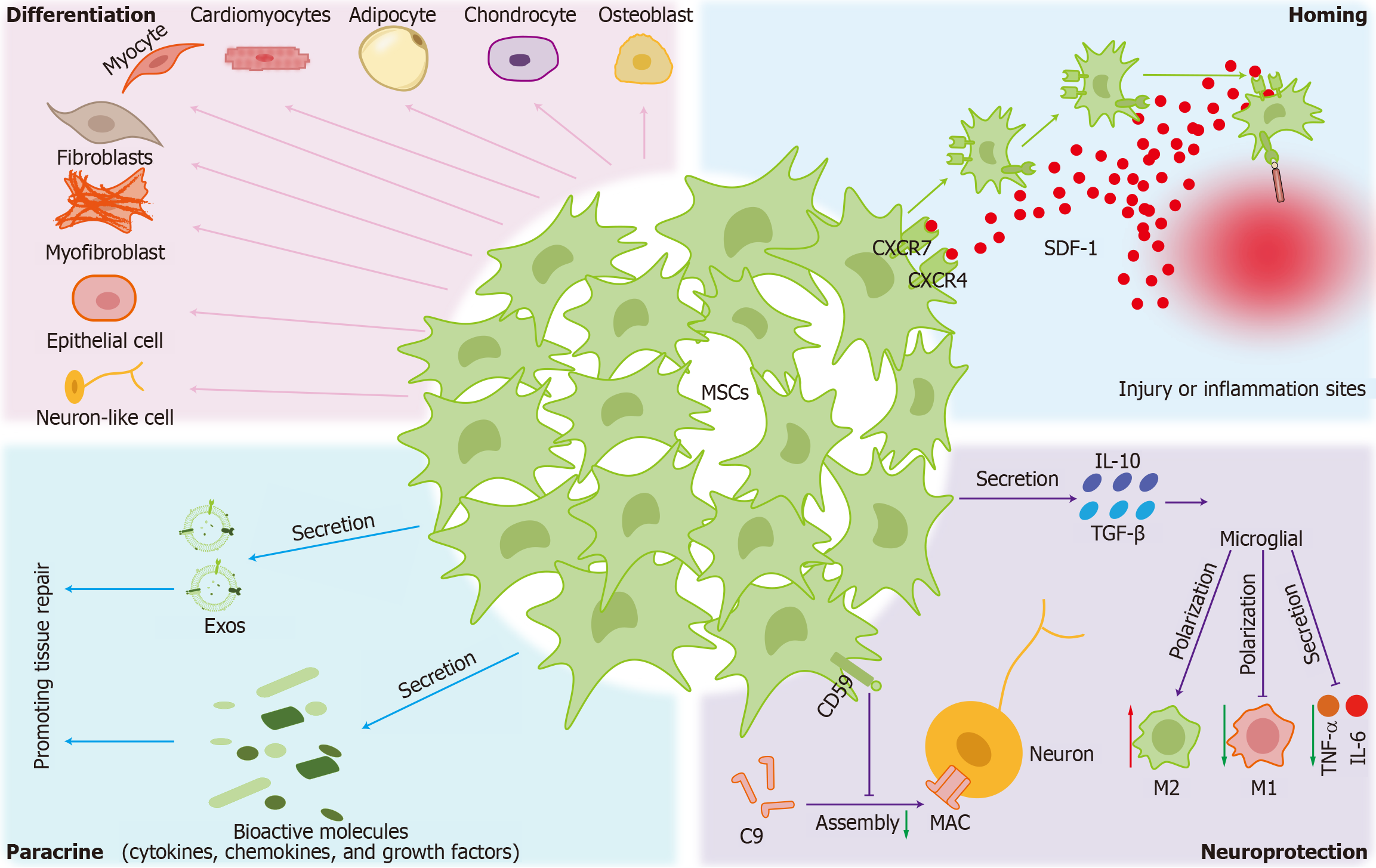Copyright
©The Author(s) 2025.
World J Stem Cells. Aug 26, 2025; 17(8): 107717
Published online Aug 26, 2025. doi: 10.4252/wjsc.v17.i8.107717
Published online Aug 26, 2025. doi: 10.4252/wjsc.v17.i8.107717
Figure 1 Pathogenesis and clinical manifestations of five neurodegenerative diseases.
This diagram summarizes the complex etiologies and phenotypic spectra of the five neurodegenerative diseases. AD: Alzheimer’s disease; PD: Parkinson’s disease; ALS: Amyotrophic lateral sclerosis; NPC: Niemann-Pick disease type C; HD: Huntington’s disease; Aβ: Amyloid-β; mHTT: Mutant Huntingtin; TDP-43: Transactive response DNA-binding protein 43.
Figure 2 The therapeutic mechanisms of mesenchymal stem cells.
Mesenchymal stem cells (MSCs) migrate to the injury or inflammation sites through the homing effect. MSCs possess multidirectional differentiation potential and can differentiate into both mesodermal and non-mesodermal lineages. Moreover, MSCs promote tissue repair by secreting exosomes and bioactive molecules. Furthermore, MSCs demonstrate significant neuroprotective properties through multiple pathways. MSCs: Mesenchymal stem cells; CXCR: C-X-C chemokine receptor; SDF-1: Stromal cell-derived factor 1; Exos: Exosomes; IL: Interleukin; TGF: Transforming growth factor; MAC: Membrane attack complex; TNF: Tumor necrosis factor.
- Citation: Cui CX, Shao XN, Li YY, Qiao L, Lin JT, Guan LH. Therapeutic potential of mesenchymal stem cells in neurodegenerative diseases. World J Stem Cells 2025; 17(8): 107717
- URL: https://www.wjgnet.com/1948-0210/full/v17/i8/107717.htm
- DOI: https://dx.doi.org/10.4252/wjsc.v17.i8.107717














